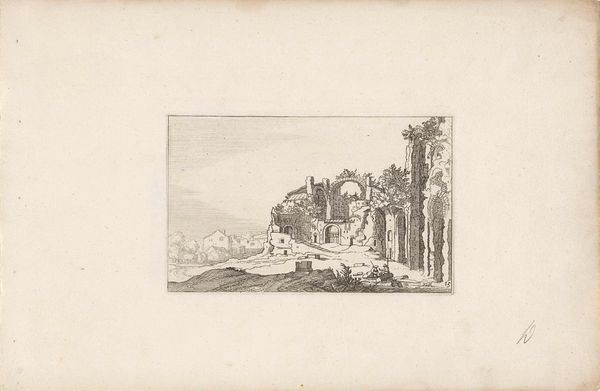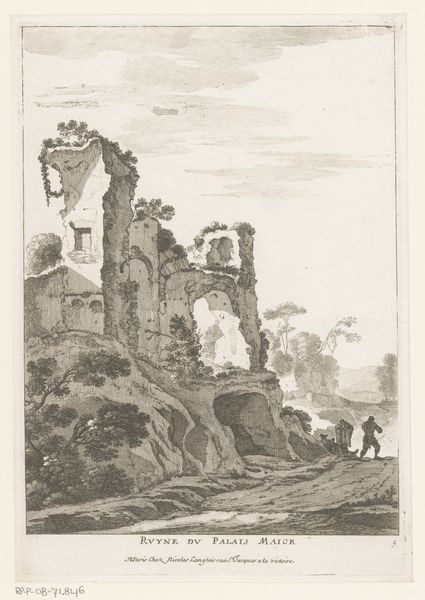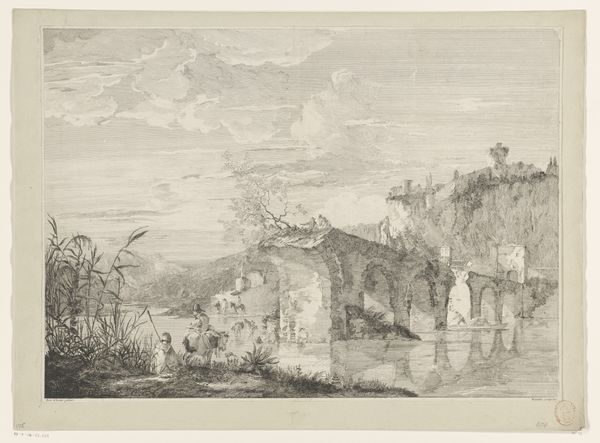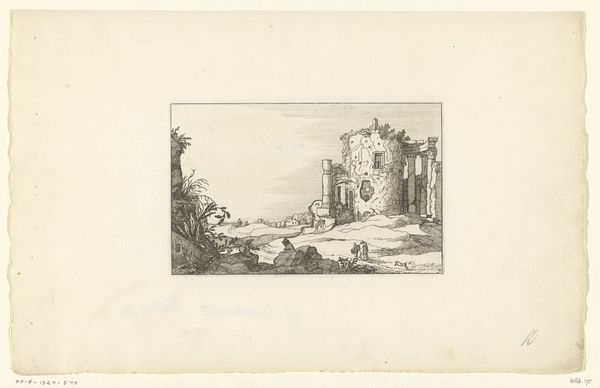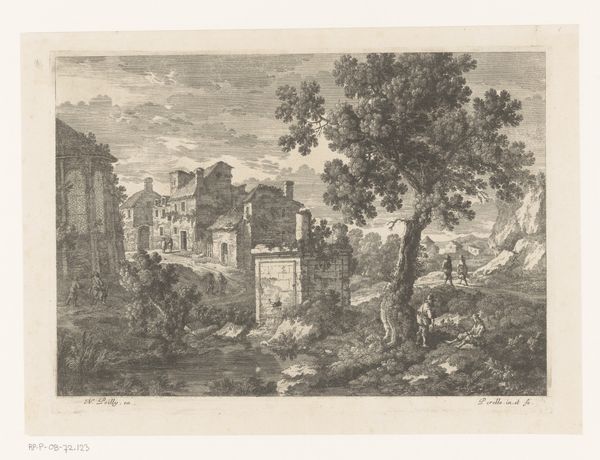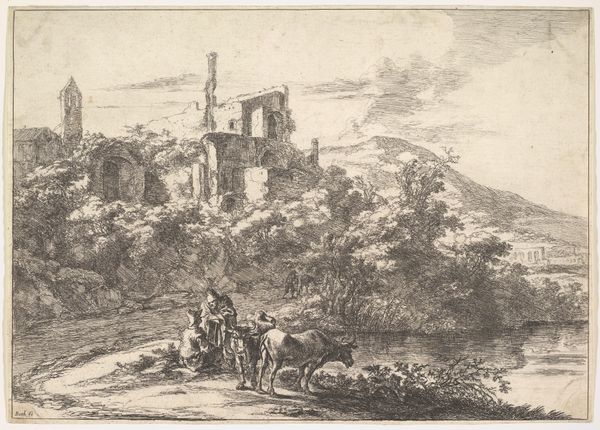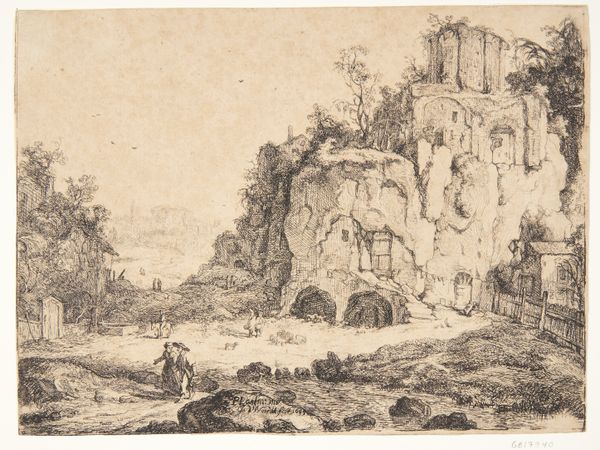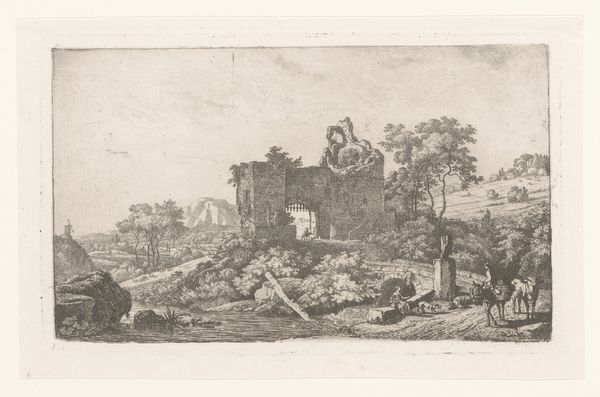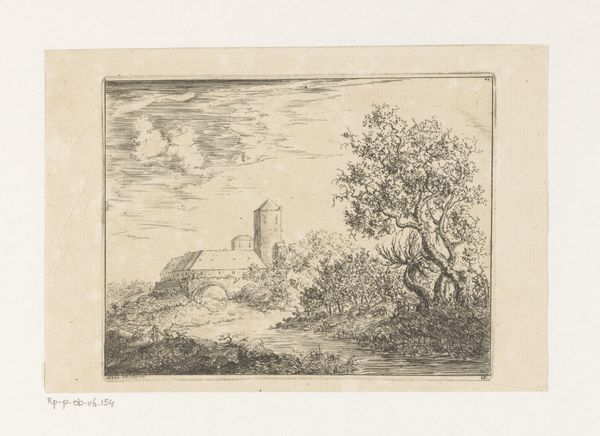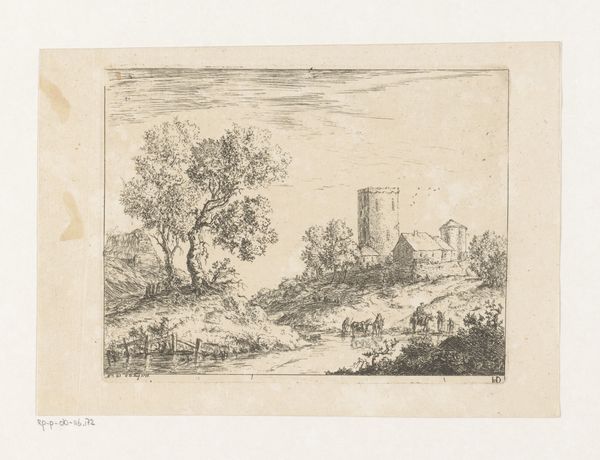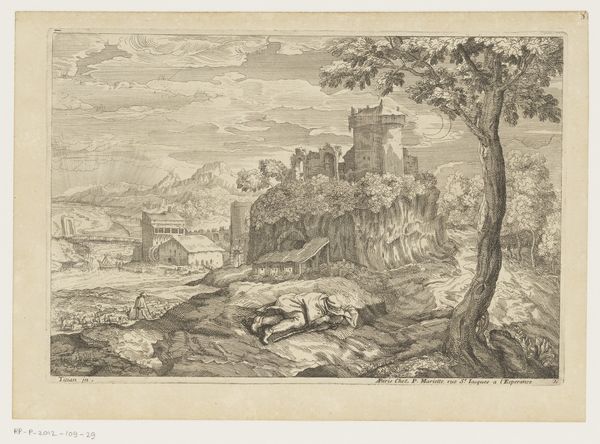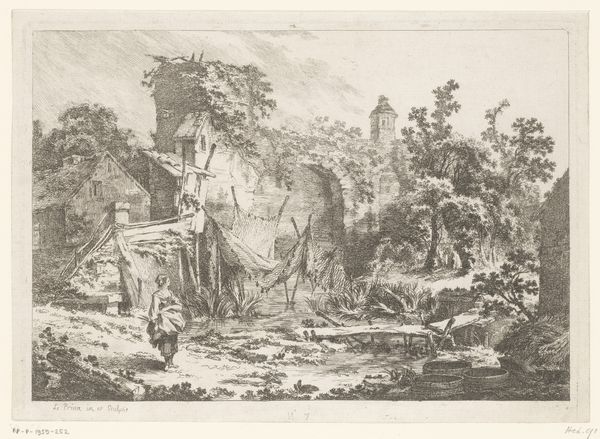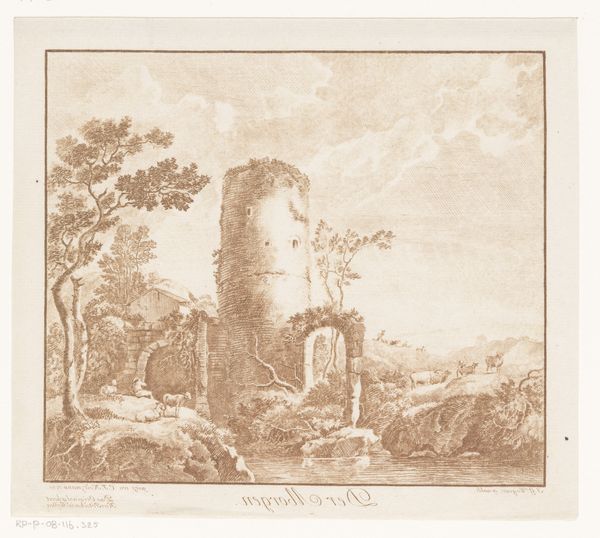
Dimensions: height 180 mm, width 207 mm
Copyright: Rijks Museum: Open Domain
Editor: So, this is Carl Friedrich Holtzmann's "Landscape with Ruin and a Shepherd with Cattle," an etching from 1772. It has this quiet, almost melancholic mood to it. All these meticulously etched lines creating this scene of pastoral life amidst architectural decay. What strikes you about it? Curator: The ruin is what really grabs me. The decay represented here has layers. The ruins become picturesque, a place of aesthetic contemplation, rather than sites of unease over societal breakdown or lost glory. So, why in the late 18th century do these depictions become more mainstream? Editor: Do you think there’s a commentary being made through the positioning of this idealized rural life right next to it? Like nature persisting while civilization crumbles? Curator: Precisely. These idyllic pastoral scenes placed in contrast to decaying structures became very fashionable. It played into a rising nostalgia for the pre-industrial. Now the work exists and we, as consumers, validate a market, helping ensure future commissions that echo that first work. How do you think Holtzmann and the Baroque style contributes to that idea of this ruin representing an appeal to a bygone era? Editor: That is fascinating. I never considered how artworks play into creating this market! His very technique and composition idealizes a sense of nostalgia. He’s making the ruin beautiful rather than desolate. This whole thing feels almost staged. It changes everything. Curator: Absolutely. That’s where understanding the social history is so enlightening!
Comments
No comments
Be the first to comment and join the conversation on the ultimate creative platform.
